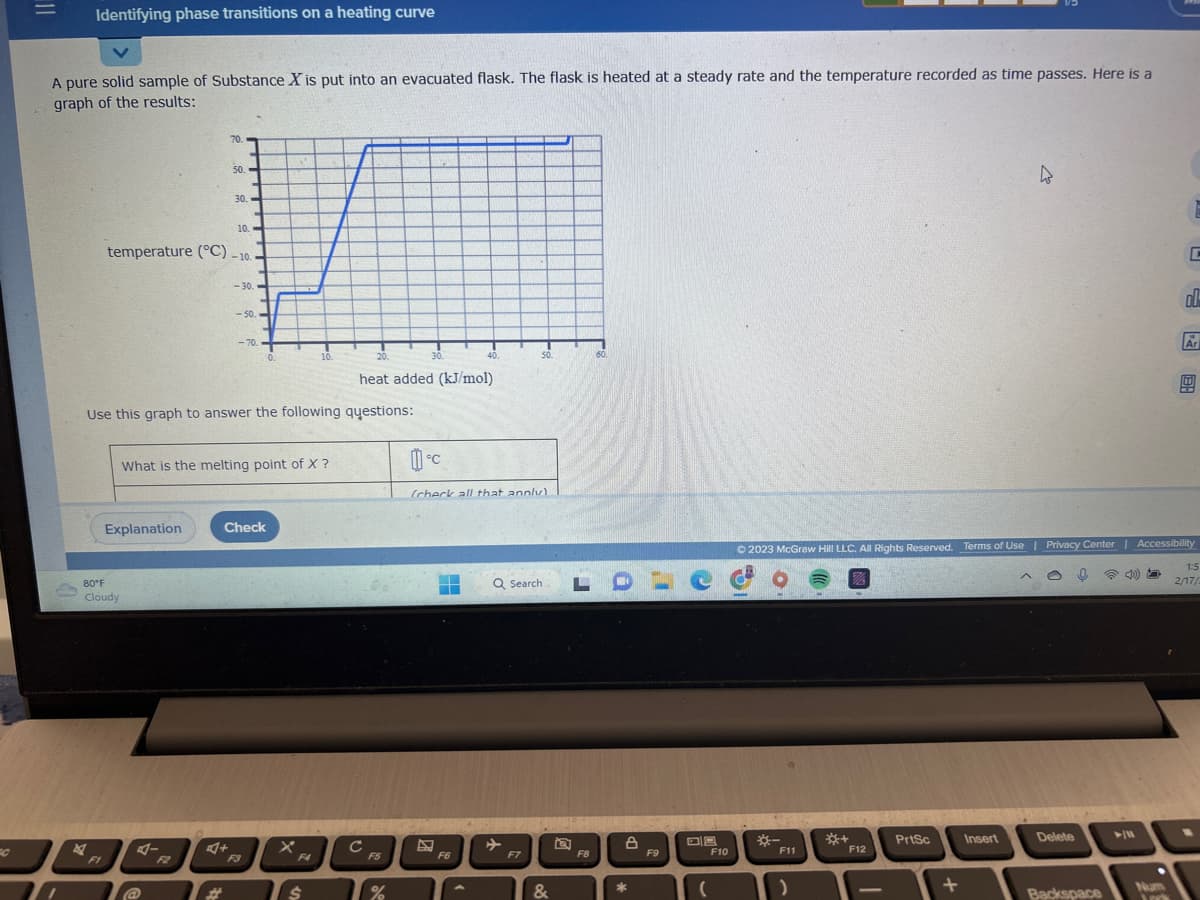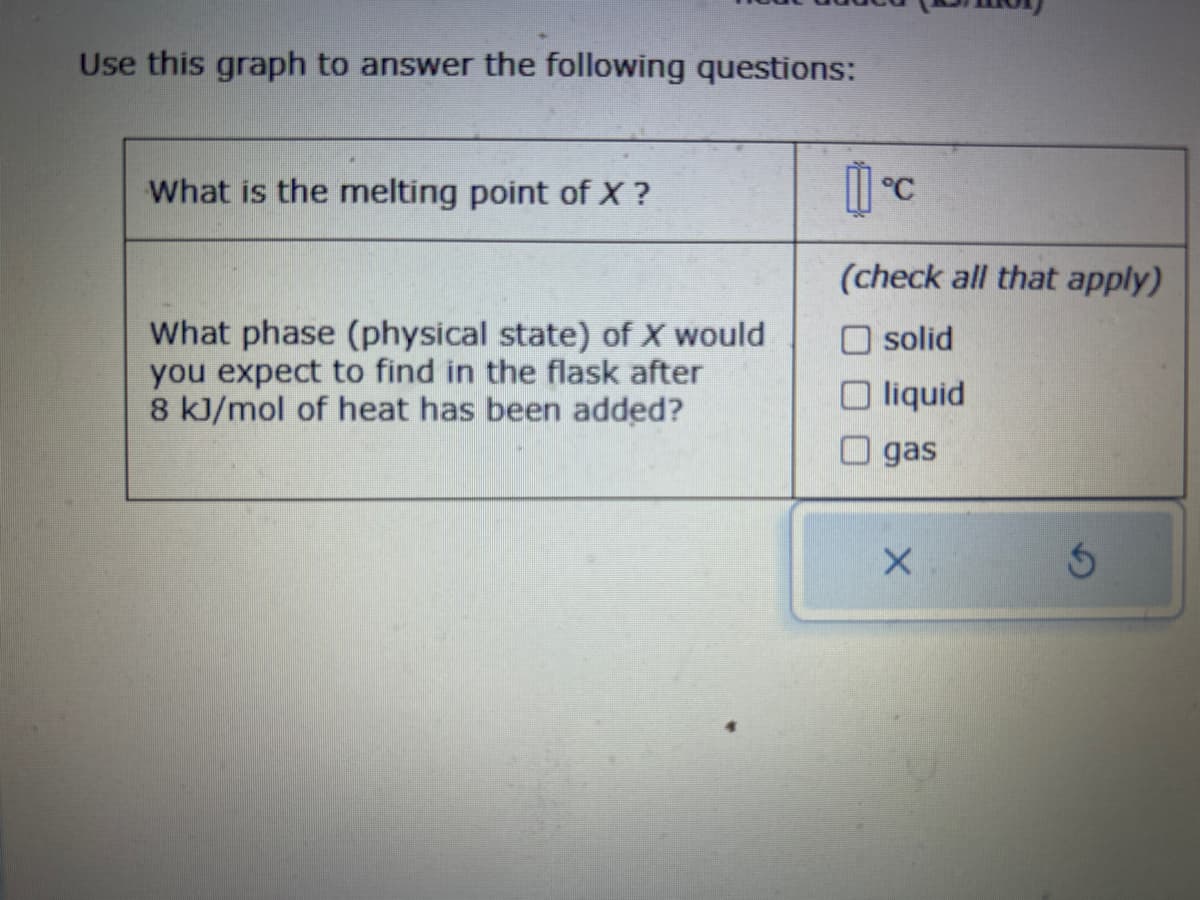Use this graph to answer the following questions: What is the melting point of X ? What phase (physical state) of X would you expect to find in the flask after 8 kJ/mol of heat has been added? [°C (check all that apply) Osolid O liquid gas X 5
States of Matter
The substance that constitutes everything in the universe is known as matter. Matter comprises atoms which in turn are composed of electrons, protons, and neutrons. Different atoms combine together to give rise to molecules that act as a foundation for all kinds of substances. There are five states of matter based on their energies of attraction, namely solid, liquid, gases, plasma, and BEC (Bose-Einstein condensates).
Chemical Reactions and Equations
When a chemical species is transformed into another chemical species it is said to have undergone a chemical reaction. It consists of breaking existing bonds and forming new bonds by changing the position of electrons. These reactions are best explained using a chemical equation.


In the above graph we see the 2 horizontal lines .
The horizontal line which is present below (lower) is Melting line. This indicates the Solid sample is converted into the liquid. when the solid starts to melt , the temperature remains unchanged during the melting.
The horizontal line which is present above (upper) is Boling line. This indicates the sample is converted from liquid into the gas . when the liquid starts to boil , the temperature remains unchanged during the boiling .
Step by step
Solved in 2 steps









